6 Types Of SWALLOWS In Florida (ID Guide With Photos)
Did you recently come across a swallow in the state of Florida, and want to know what species it was?
Identifying swallows in the Sunshine State is not as easy as it might seem, since there are many swallow species in Florida.
To help you identify the bird you saw, we’ll cover the most common swallows of Florida in this article.
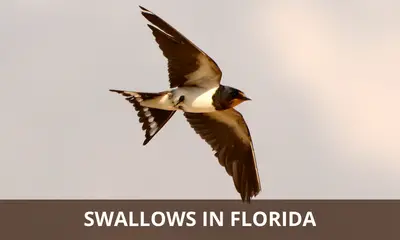
What are the types of swallows in Florida?
The 7 types of swallows found in Florida are:
- Barn Swallow
- Northern Rough-winged Swallow
- Purple Martin
- Cave Swallow
- Tree Swallow
- Cliff Swallow
- Bank Swallow
While some of these swallows are year round residents of Florida, others only occur in the state during the winter, while yet others are summer visitors during the breeding season.
Finally some are only seen in the state of Florida during migration in fall and spring. Now let’s dive into the details, and take a closer look at each of these birds:
Barn Swallow
Scientific name: Hirundo rustica
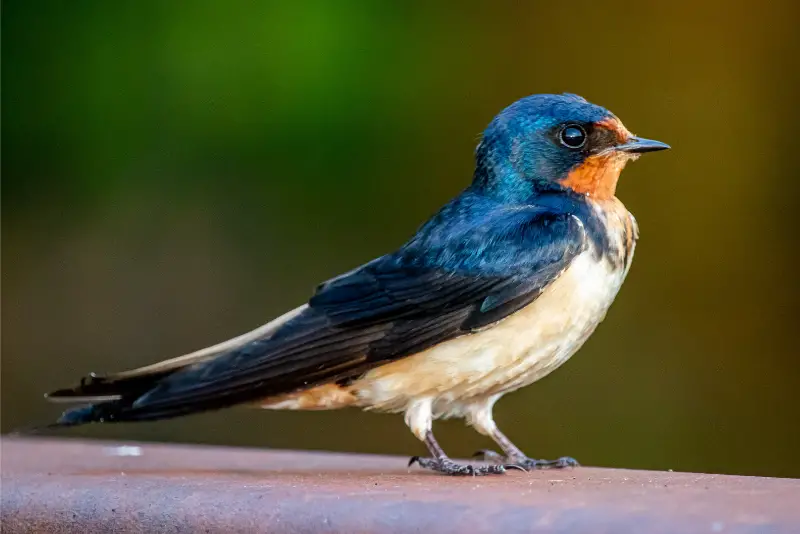
The Barn Swallow inhabits nearly all of North America south of the Arctic circle and may be found in a wide variety of habitats.
It is a breeding bird in northern Florida, and during migration is also commonly encountered throughout the rest of the state.
While it has dark iridescent blue upperparts, its underside is reddish-orange, including a chestnut orange forehead and throat, as well as a light reddish-orange belly.
The deeply forked tail of Barn Swallows is another great feature you can use to identify this bird.
However, keep in mind that immature birds have a duller plumage than adults, as well as a shorter tail that is less forked.
This bird used to nest in caves and hollow trees, but nowadays it prefers to do so beneath the overhangs of buildings and bridges, as well as inside barns (which explains how it got its name).
Barn Swallows are still a reasonably common sight in most areas. However, the overall numbers of these birds have been steadily decreasing, especially in the northern section of their range.
This decline is likely a result of the loss of foraging areas and nesting opportunities.
This bird feeds on flying insects, such as mosquitoes and flies, and catches them closer to the ground than other species of swallows. In its winter quarters it also feeds on termites.
It is a strictly migratory bird, and spends the winter in Central and Southern America.
Northern Rough-winged Swallow
Scientific name: Stelgidopteryx serripennis
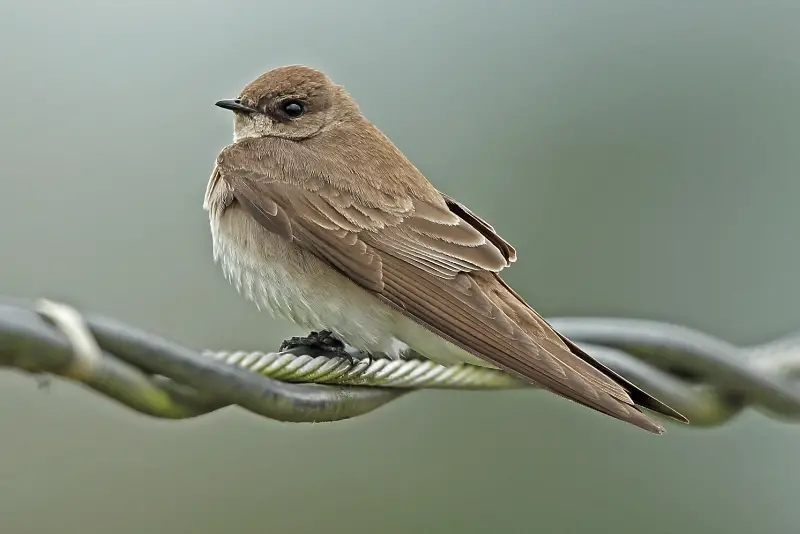
The Northern Rough-winged Swallow is a common breeding bird throughout North America during the summer.
With a uniformly light brown upper side and buff white underside, it is less colorful than other species, and often goes unnoticed.
In Florida, this swallow is a summer visitor in the northern part of the state, and a winter visitor in the southern part of the state. It is also a year-round resident along the Florida Gulf Coast.
These birds prefer to hunt over water, hunting flying insects over rivers, lakes, and ponds. You can also often see it resting on telephone wires or other exposed perches.
This bird is a burrow nester that occupies abandoned cavities built by other birds.
It migrates south in winter, and spends the cold months in Southern Florida and Central America.
Purple Martin
Scientific name: Progne subis

The Purple Martin is the largest swallow in North America. The male is almost entirely dark purplish blue with an iridescent sheen. The wings and tail are black.
Juvenile birds and females are light gray on top, with beige white underparts. The male Purple Martin is the only martin species that doesn’t have a light colored belly.
While these blue-colored Florida birds originally built their nest in tree cavities, they have switched over to using man-made nesting sites instead.
The Purple Martin likes to nest in colonies, which often comprise dozens of pairs. It is a skilled aerial hunter, and feeds mostly on dragonflies.
Similar to other species of swallows, the Purple Martin drinks in flight, by skimming the surface of a body of water.
This bird is a strictly migratory species and spends the winter in South America. It congregates in large roosts in fall, which fly south together.
The best way to attract these gorgeous blue birds to your yard is by putting up a Purple Martin house in your backyard,
Cave Swallow
Scientific name: Petrochelidon fulva
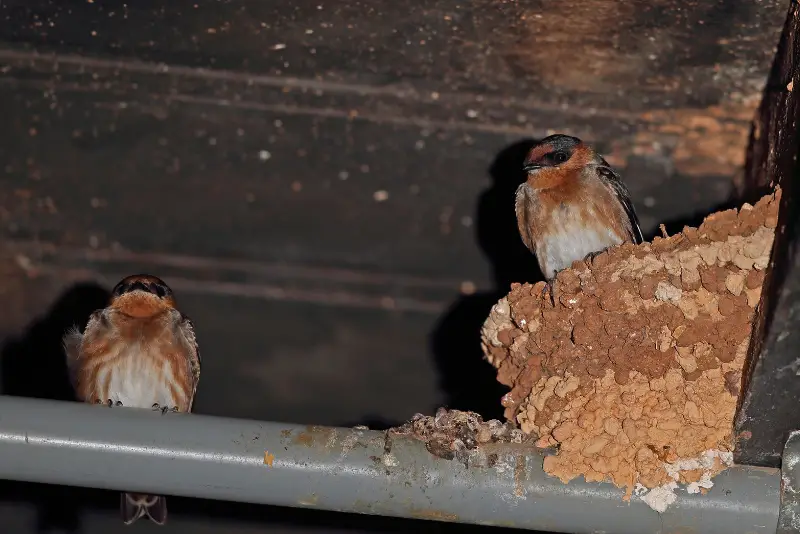
The Cave Swallow occurs in two subspecies, one of which is found in the southwest, while the other is found in the Caribbean.
The Caribbean subspecies breeds in south Florida, and is darker than its western counterpart.
This bird is best identified by its chestnut rump, forehead and throat, which contrast with its dark blue back and cap.
While these birds originally nested inside the entrances of caves, they have adapted to breeding under Florida highway bridges in recent years, which has allowed them to expand their range nothwards.
They are colonial nesters that build large nests out of mud that are stuck to the underside of bridges and other large structures.
Cave Swallows are summer breeding visitors in Florida, and spend the winter in Central America and the Caribbean.
Tree Swallow
Scientific name: Tachycineta bicolor

The Tree Swallow is relatively common in Florida during winter, and is most often found close to lakes, marshes, and ponds.
Adult birds are greenish blue on top, and have buff white underparts. Their feathers are iridescent, and change color when viewed in direct sunlight.
While adult females look similar to adult males, young individuals are more grayish brown with a white underside.
This bird readily accepts suitable nesting boxes, which gives you an opportunity to attract this attractive blue-colored bird to your backyard.
Tree Swallows winter in Florida and around the Gulf of Mexico, as well as in Central America.
Cliff Swallow
Scientific name: Petrochelidon pyrrhonota
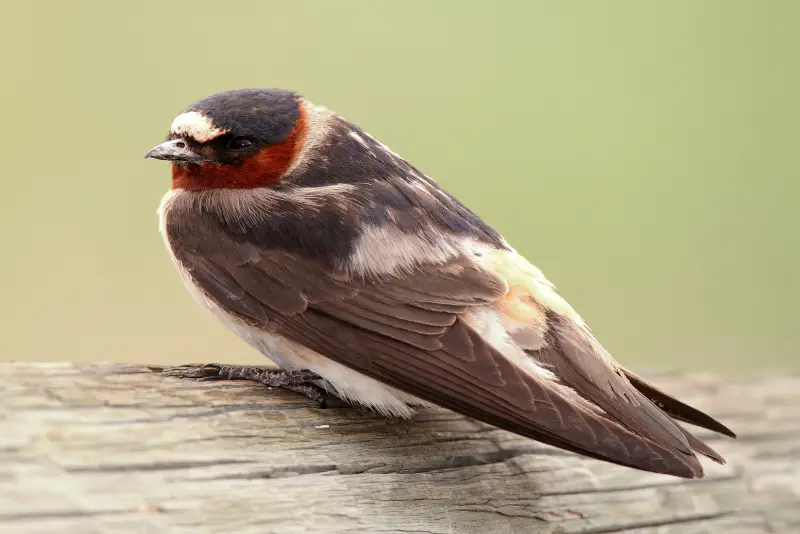
The Cliff Swallow is a uniquely colored bird that has a rust red forehead and cheeks.
The rest of the plumage is mostly dark, except for the light cream colored belly. The female looks similar to the male.
While it doesn’t nest in the state, the Cliff Swallow is found in Florida during migration in fall and spring. It prefers open country, as well as bodies of water, where it forages for flying insects.
Similar to several other species on this list, this bird is a long-distance migrant that spends its winter in South America.
During migration, these birds are often encountered in mixed flocks with other swallow species.
Bank Swallow
Scientific name: Riparia riparia
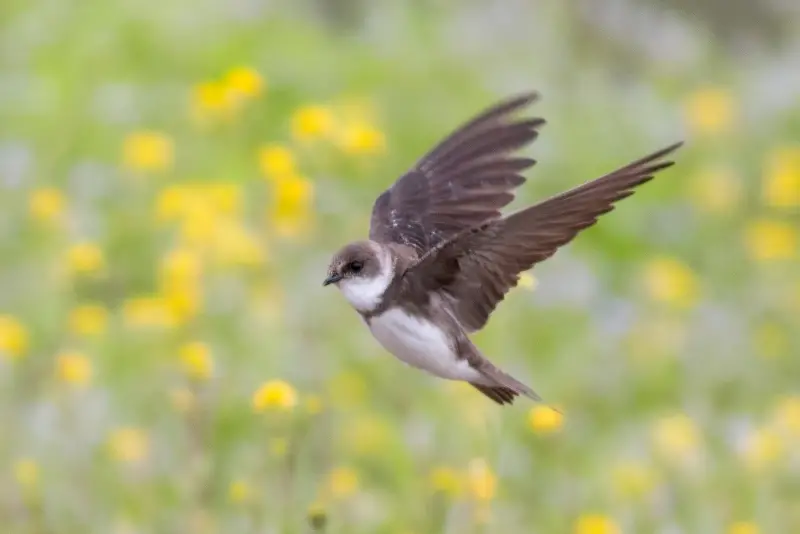
The Bank Swallow is a breeding bird of Canada and northern US states, but it is regularly seen in Florida during the migration seasons in fall and spring.
Similar to Northern Rough-winged Swallows, these birds are light brown on top, and buff white on the belly. The best distinguishing feature to identify this bird is its brown band across the chest.
During migration it is often found in mixed flocks with other swallows, which can make identification more difficult. However, if you spot the brown chest band, you can be sure you’re looking at a Bank Swallow.
While this bird has a huge global range that encompasses most continents except for Australia and Antarctica, it has unfortunately undergone a steep decline in North America in recent years.
Conclusion
And there we have the swallows found in the state of Florida.
The varied habitats of Florida are home to more than 500 different species of birds, and swallows make up a significant proportion of this rich avifauna.
These elegant birds that spend most of their time in the air play a vital role in the ecology of their habitats.
If you enjoyed this article, check out our guide to the white birds of Florida.
